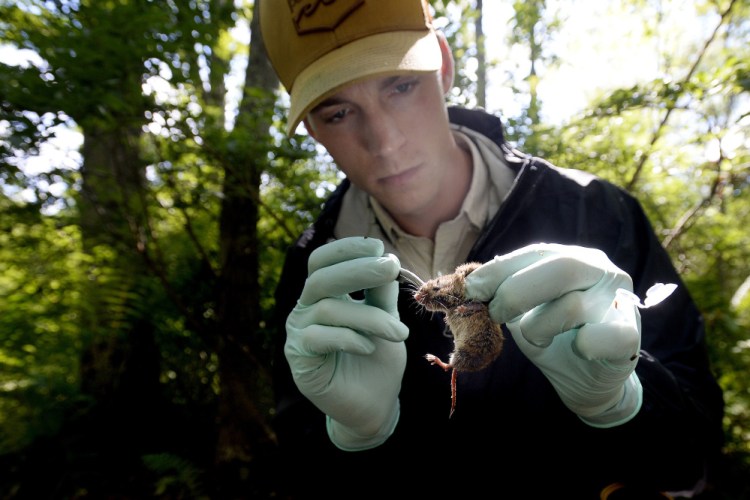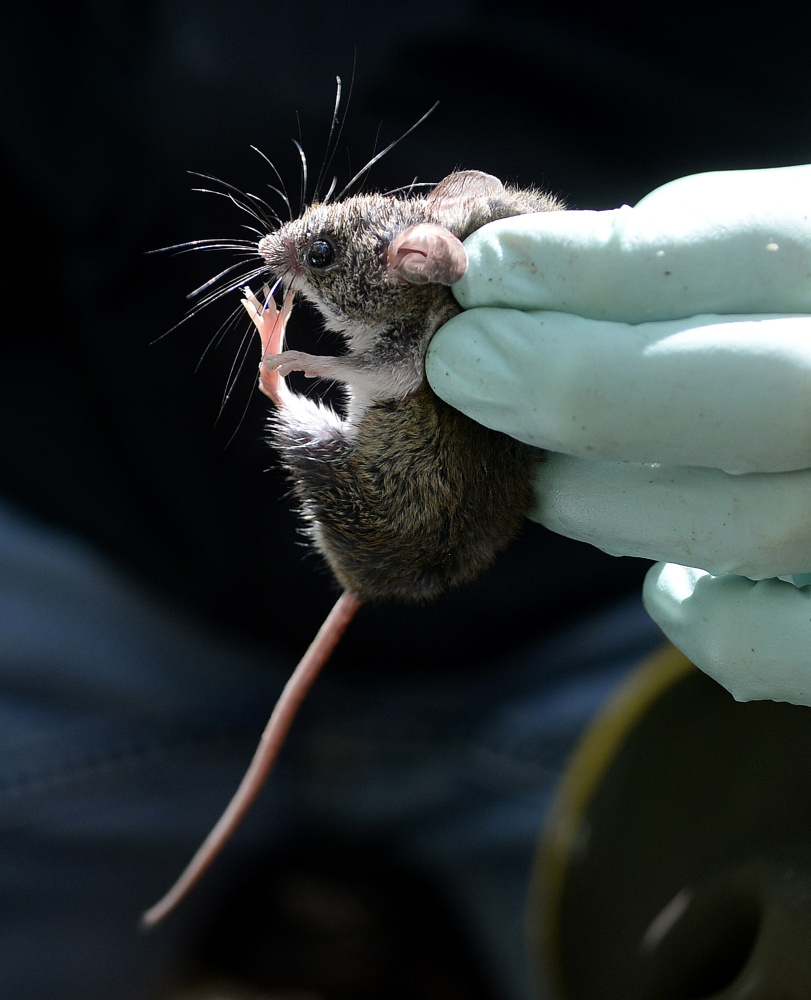While the drought is causing problems for some farm crops and concerns about the groundwater supply, it has an upside: Scientists say the dry conditions have reduced the population of deer ticks, the arachnid that transmits Lyme disease.
The number of Lyme disease cases was lower than the five-year average for the six months through June 30, the Maine Center for Disease Control and Prevention said.
Maine had reported 232 Lyme cases through June 30 this year, compared to the five-year average of 267 through the same period.
Lyme cases had reached 424 through Thursday, but the Maine CDC did not have a five-year average through Aug. 18 for comparison.
Lyme cases reached a high of 1,399 in 2014 before declining to 1,176 in 2015. In the early 2000s, Maine averaged a few hundred cases of Lyme disease per year.
However, the number of cases involving two other tickborne diseases, anaplasmosis and babesiosis, have reached all-time highs this year, the Maine CDC said, although their numbers are still far lower than Lyme.
Why those tickborne diseases are seeing an increase while deer tick populations declined this year is unclear, a researcher said.
Scientists at Maine Medical Center Research Institute in Scarborough and the University of Maine Extension said far fewer deer ticks are being collected in field surveys this year, during a parched, hot summer.
“The dry summer has seemed to put a real dent in the tick population,” said James Dill, pest management specialist at the University of Maine Cooperative Extension.
SOME DEAD, OTHERS DORMANT
Much of southern Maine is in the midst of severe drought conditions, according to the U.S. Drought Monitor program, while midcoast Maine is undergoing a moderate drought, with conditions considered abnormally dry in western, central and Down East Maine. Precipitation is several inches below normal, according to the National Weather Service.
Deer ticks thrive in moist, humid conditions, and Maine’s dry spell is killing some and causing other deer ticks to become far less active and go into a hibernationlike state, said Charles Lubelczyk, the research institute’s field biologist.
“Especially when you get away from the coastline, the dry conditions have knocked the tick population down,” Lubelczyk said. “The humidity along the coast keeps the tick numbers higher. When you go inland, the numbers of ticks we’re seeing in the field are down 50 to 75 percent.”
However, that doesn’t mean 50 percent to 75 percent of inland deer ticks have actually died, Lubelczyk said, explaining that some may have died, but others have gone dormant, reducing their activity to survive the drought.
The research institute monitors deer tick populations in various areas across the state, including Augusta, Portland, York County and the midcoast.
“In some places, like Augusta, we have had a hard time finding any deer ticks,” Lubelczyk said. Field workers sweep fabric flags over tick habitat and count the number of deer ticks that attach to the fabric.
Dill said the extension’s identification lab, where Maine residents can send in deer ticks for testing, has seen about one-third fewer deer ticks brought in during 2016 compared to 2015.
He said scientists trapping rodents in southern Maine have found far fewer deer ticks than expected on mice, voles, squirrels and chipmunks.
Lubelczyk said the record spike in anaplasmosis cases – 224 cases of anaplasmosis through Aug. 18 compared to 186 cases in all of 2015 – is puzzling and he doesn’t know why there has been a jump this year. He said anaplasmosis is just gaining a foothold in Maine, in a way similar to the rise of Lyme disease in the early 2000s.
Anaplasmosis is a bacterial infection transmitted by deer ticks, and symptoms include fatigue, headaches, fever and chills. Treatment, similar to that for Lyme disease, is antibiotics.
‘A MONSTER YEAR’ FOR DOG TICKS
The Maine CDC also reported 56 cases of babesiosis cases through Aug. 18, compared to 55 cases for all of 2015.
While many people who contract babesiosis do not have any symptoms, some people can develop flulike symptoms such as fever, chills, sweats, headache, body aches, loss of appetite, nausea, or fatigue, according to the CDC.
Babesiosis also can cause anemia because it attacks red blood cells. It can be life-threatening for those who do not have a spleen; have weakened immune systems from cancer, lymphoma or AIDS; have serious health conditions such as liver or kidney disease; or are elderly.
And while deer tick populations have declined, dog tick populations are thriving. Lubelczyk said dog ticks are more drought resistant.
“It has been a monster year so far for dog ticks. We have seen them everywhere,” Lubelczyk said.
Dog ticks can transmit Rocky Mountain spotted fever to humans, but Maine has not seen an introduction of spotted fever in humans, according to the Maine CDC.
Send questions/comments to the editors.





Success. Please wait for the page to reload. If the page does not reload within 5 seconds, please refresh the page.
Enter your email and password to access comments.
Hi, to comment on stories you must . This profile is in addition to your subscription and website login.
Already have a commenting profile? .
Invalid username/password.
Please check your email to confirm and complete your registration.
Only subscribers are eligible to post comments. Please subscribe or login first for digital access. Here’s why.
Use the form below to reset your password. When you've submitted your account email, we will send an email with a reset code.